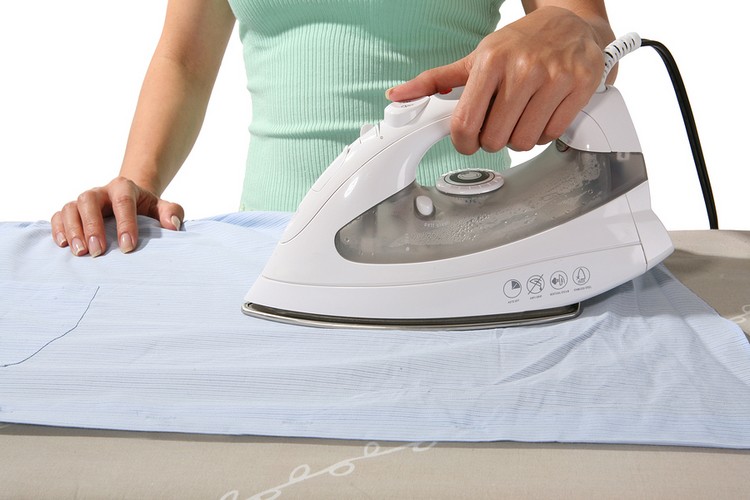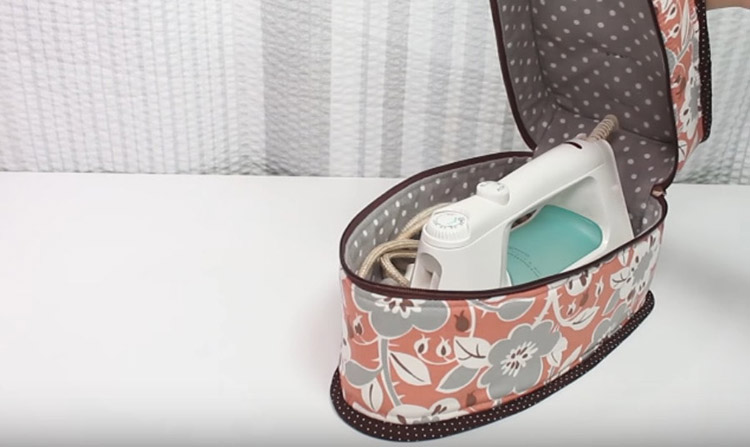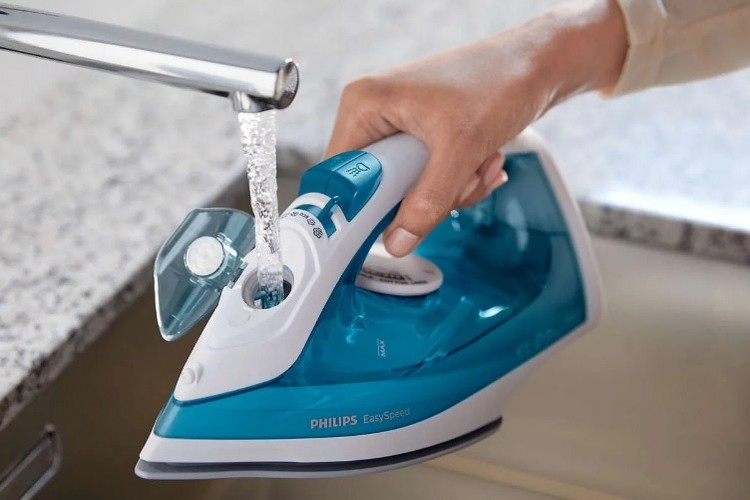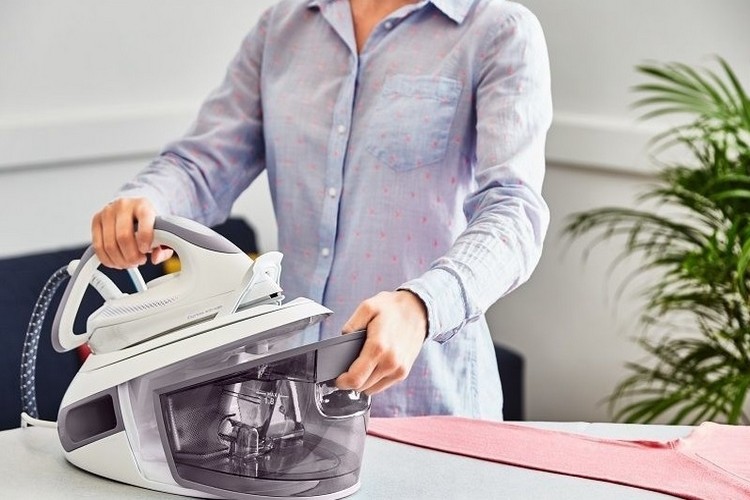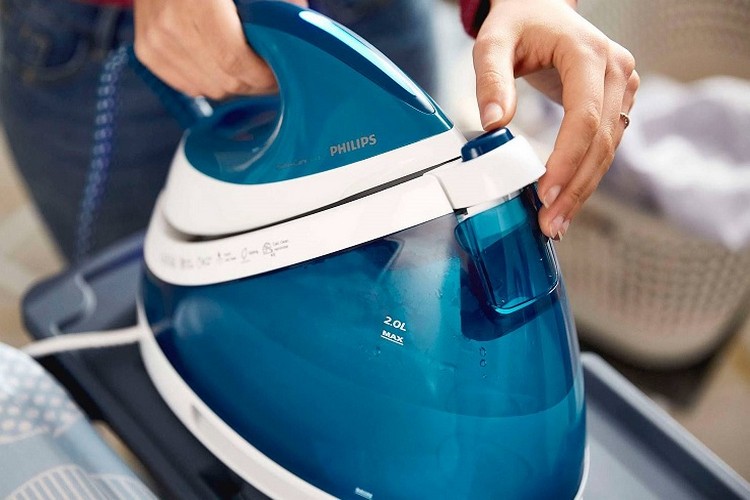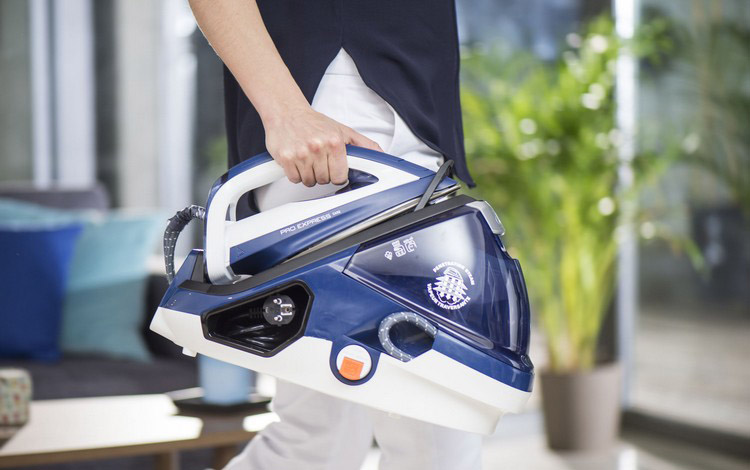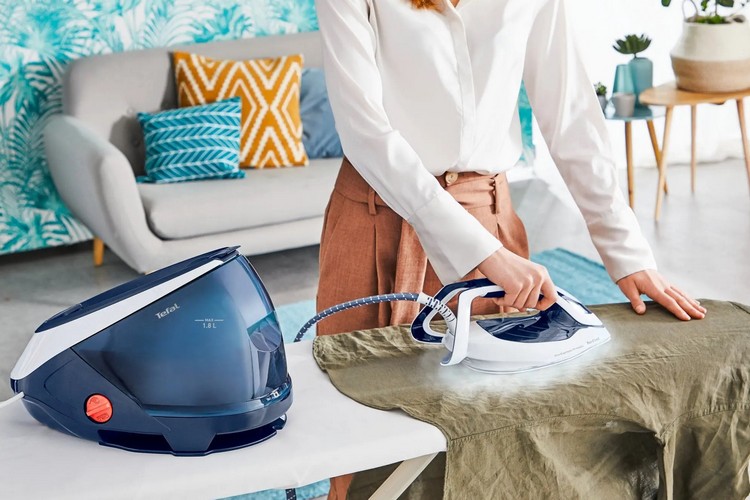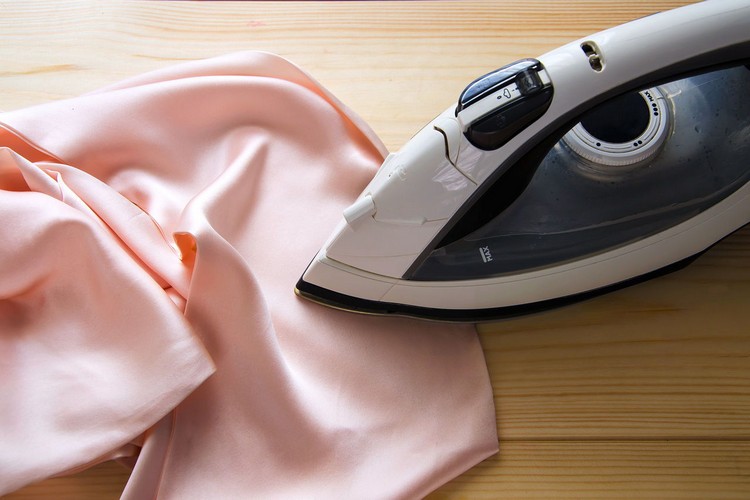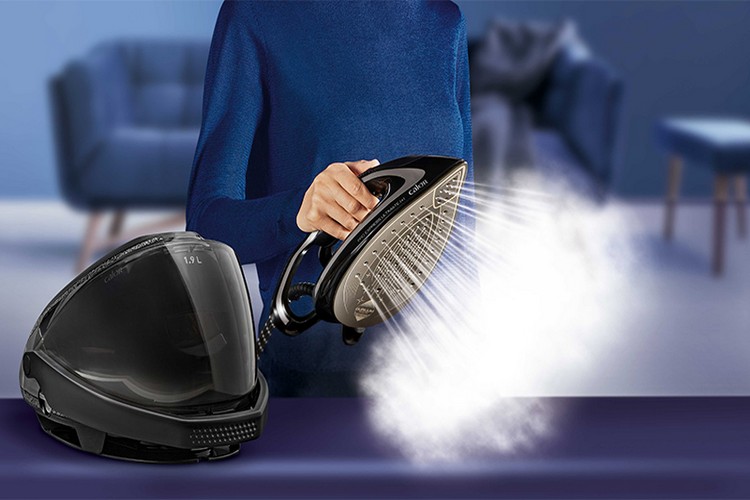Determining what is better - an iron or a steam generator: a comparison of devices, pros and cons of each solution
 An iron is a device for ironing and simply steaming clothes, fabrics.
An iron is a device for ironing and simply steaming clothes, fabrics.
Steam generator, in turn, although it performs similar tasks, but has significantly more functionality.
And what is recommended for the average user to choose? What are the advantages and disadvantages of irons and steam generators, how well are they also suitable for processing furniture, bedding, bulk clothing or soft toys?
Contents
The benefits of irons
One of the main advantages of irons is their low cost.
Technically, such a device consists of a heat-resistant body, heater, backing, sometimes also supplemented by a simple steam generator. Therefore, their price starts at 1500 rubles. But this is not their only advantage.
Power Consumption
The iron consumes about 1.5 - 2 times less electricity than the steam generator. Taking into account today's electricity prices this is very relevant. But we must remember that the heating element of even the simplest iron is designed for 1 - 2 kW, that is, these devices can not be called "economical".
Easy care
The only thing you will need to do is to periodically clean the soleplate of fouling. This can be done with a cleaning cloth or a special pencil that costs less than 100 rubles.
Some irons, which have a water tank, also need to be washed occasionally with a solution of citric acid or specialized descalers.
Easy to use
You won't need any special skills to get your iron up and running. You just plug it in, set the switch to the temperature setting you want, and you can start ironing immediately.
If the function of the steamer is supported, pour water into a container and while ironing, periodically steam your clothes or fabric.
Takes up minimal space.
There are even portable wireless models of irons that you can take with you in your suitcase on a trip. For storage of such a device will also need a minimum of space.
Disadvantages of irons
The key disadvantage of irons is the lack of additional functions. And steaming, if it is provided in some models, is only conditional. And this is not all the disadvantages of these devices.
Not suitable for delicate fabrics
There is a wide range of fabrics that categorically should not be subjected to heat treatment. That is, there is a risk of damaging the material if the required temperature conditions are not met.
Must be equipped with ironing board
For ironing things you need flat surface, resistant to high temperatures. That means there must also be a place to store the ironing board. For small houses, one-room apartments this may become a real problem.
Not suitable for all clothes
If the clothes have small folds, cuffs, complex seams, then it is not possible to iron it qualitatively. That is, the mobility of the iron leaves much to be desired.
The same applies to bulky outerwear or soft toys - they cannot be ironed with the iron.
Heavy weight
Both the heater and the water tank are located in one body. Prolonged ironing really makes your hands tired. Steam generators have a separate water tank and you only have to hold a small handle.
You have to refill the water tank all the time.
Irons have an average water tank capacity of 30 to 40 milliliters. You have to refill it several times during the ironing process..
And you also need to use filtered water. Otherwise limescale will build up in the nozzles. If it is not removed in time, the iron will fall into disrepair (or use without steaming).
The benefits of steam generators
Steam generators are designed specifically for steaming. And this means a more delicate and high-quality treatment of your clothes. Steam cannot be heated over 90 to 100 degrees Celsius, so you can't damage the fabric.
Use without ironing board
No ironing board is needed for steaming with the steam generator, the clothes are placed vertically. And thanks to that ironing is much faster.
Steam blow
The steam pressure is two to three times that of irons. That is why it is suitable for tough fabrics. You no longer need to steam the garment from the outside, then turn it inside out.
Fast heat-up
The steam generator only needs a minute from startup to full steam. An iron takes 3 to 5 minutes.
Water tank capacity
The steam generator has a water tank capacity of at least 2 liters. One refill is enough for 2 to 3 hours of active work. During this time, you can iron almost all the things in the home closet!
Removes unpleasant odors
That is why it is recommended for ironing children's clothes. The steam generator also removes the smell of detergent or laundry detergent (some people have allergic reactions to such scents).
Additional functions
The strength of the steam blow, the temperature - all of these can be fine-tuned.
Most steam generators have an integrated digital control unit with a user-friendly digital display.
Service life
Steam generator manufacturers often provide an official warranty period of 3 years. For irons, this figure is only 6 - 12 months.
Disadvantages of steam generators
The main disadvantage is the cost.
The average price of modern steam generators starts at 15 thousand rubles, so when the budget is limited, most people prefer the traditional irons.
Operating noise
Also, steam generators during operation are noisy. Even if only slightly, the irons are silent at all.
Electricity consumption
Modern steam generators use about the same amount of electricity as your irons. Older models consume about 2.5 kW and require high quality electrical wiring in the house.
Takes up more space
Both for ironing and storage a steam generator requires more space. But still less than for an iron together with an ironing board.
Which appliances are preferred for certain tasks
While a steam generator has a larger feature set and is superior to an iron by all criteria, for some tasks, buying one will not be cost-effective.
Treating upholstered furniture
An iron is not suitable for this task at all, since it can damage the upholstery due to the high temperature of the soleplate heating. And as a filler in upholstered furniture is often used foam rubber, which can not withstand heat over 100 degrees (will melt).
Treating linens
Both the iron and the steam generator are equally suitable for this task. But the latter is much more comfortable to work with, since large sheets and duvet covers on the ironing board constantly have to be rearranged.
Ironing of pants, shirts
Steam generator is faster and more convenient to work with. Iron in most cases is also suitable, but it is impossible to quality iron clothes with a lot of folds, cuffs or decorative accessories. Also for tight jeans the steam generator is also the best choice.
Iron your winter outerwear.
For this, you can only use a steam generator. Especially if we are talking about down jackets with artificial filling (and such jackets are the most common). For coats, fur coats the iron is also not suitable.
Processing of soft toys
The iron is categorically contraindicated, since toys are made of synthetic fabrics, the filler is foam rubber. The steam generator allows you to perform an antiseptic treatment against carpet and bed mites. And due to the power of the steam blow, the steam penetrates to a depth of up to 1 centimeter. The same applies to pillows.
Iron your towels.
A steam generator is also preferable. And only it can be used for ironing heavy terry towels made of natural fabrics.
Comparing the functionality of irons and steam generators
Modern irons are only suitable for ironing, and there is also the possibility of adjusting the temperature of heating (3 - 5 positions, without setting a precise value). The function of steaming there is only conditional, there is no protection against splashing drops.
Steam generators allow fine-tuning the temperature mode. There are models where it is set automatically, depending on the type of fabric. And such devices have several additional modes.
Vertical Steamers
Vertical steaming allows clothes to be ironed as quickly as possible by just hanging them on the hanger-rack. No need to tumble dry or cool your garments.
Continuous steaming
Steam generators are designed by default to automatically cut off steam after 15 to 30 seconds. This saves energy, prevents overheating and prevents fabric damage. Continuous steaming is useful for processing soft toys, winter coats, furniture.
Water splash protection
Steam generators and steam stations provide protection against splashing water due to the special design of the nozzle. Therefore, there is no risk of damaging fabrics or getting burned at all. Also, the ironing is of the highest quality, without "hidden" creases or light spots from the hot water.
Steam blow
The maximum steam pressure is delivered in a brief blast. It smoothes out the tightest creases you can't get through with an iron or steam iron. Steam generators also have a steam stroke capacity setting of between 70 ml and 200 ml per minute.
Maintaining the appliance
Both your iron and steam generator require regular maintenance (as recommended by the manufacturer) to keep them in good working order and fit for use.
Iron maintenance
From time to time it is necessary to:
- Perform cleaning of the soleplate. To do this, turn the iron on, switch it to medium or maximum heat. And then treat the soleplate with a special cloth (acts as an abrasive element) or a cleaning pencil (reacts chemically with carbon deposits without damaging the metal base).
- Clean the steam system. In some models of irons, this function is provided by the manufacturer. You only need to fill the reservoir with water, turn on the maximum heat, and then press the "clean" button while holding the device over the sink. If such a function is not provided, it is recommended to use a solution of citric acid (1 teaspoon per 100 milliliters) for cleaning. Pour it into the reservoir, turn on the maximum heat, and then use the steam button to empty the container (holding the iron over the sink).
After using the iron, it is also necessary to let it cool down for 5 to 10 minutes and only then can it be moved to its permanent storage place.
Service is recommended after every 5th use.
Steam generator maintenance
Periodic maintenance of steam generators is required:
- Clean the water level sensor. Refer to the technical manual for instructions on how to remove it (procedure varies slightly, depending on model). Then the sensor is visually inspected for contamination (lime scale) and insulation damage. Clean only with non-metallic brushes. Float-type sensors (common in steam generators before 2010) must be cleaned with reagents (citric acid solution can be used).
- Clean the tank from scale. Manufacturers recommend for this purpose to use a weak soap solution or special reagents to remove lime deposits. The same applies to the working nozzle, where the nozzles are located. A non concentrated solution of citric acid can also be used. But it is not worth adding to the water means to reduce its hardness - this technique is not compatible with him.
To sum up, if there are no budget constraints, then it is definitely recommended to buy a steam generator. It has a wider functionality, more gently irons clothes and fabrics, can be used without the ironing board. The average life of its operation - 5 years with regular use (2 - 3 times a week).
Useful Video:
We present you a video from which you will learn what is better - iron or steam generator, as well as how these devices differ from each other:



